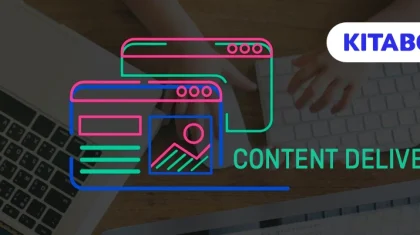
How Can Societies Digitize Publishing and Delivery Process
Internet, and thus, by extension, digitization, has changed the way things have been working before their advent. The concept of moving online has even driven every industry towards digitization. Of course, it has been rightfully done so given the advantages linked to digitization. Although it benefits all sectors we work in, we will focus on nonprofit organizations and publishing in this article.
Why should nonprofit organizations and associations switch to digital publishing?
Almost all nonprofit organizations practice the tradition of printing journals and reports. These reports give out a factual idea about their work, be it for a noble cause or for research purposes, and in turn fetch them funds and grants. Hence, reports are of utmost importance for such associations.
Digitizing the process of report publishing takes them to more readers than print journals would. Digital reports, including the digitization of existing reports, is easier than the hassles involved in publishing a journal. Here’s why should societies & associations publish & distribute journals on digital platforms.
There are software tools that help generate reports and also convert the previously printed ones to a digital format, in no time. Time consumption decreases exponentially as also does the monetary expenditure.
How will a digital report benefit the members of a nonprofit society?
- Content is shared globally: When a report is published through an online medium, it can be accessed by anybody from any corner of the world. This was difficult, if not impossible,for some associations when the same reports were published in print. However, digitization brings the global audience into the periphery of non-profit organizations, lending them a gateway to more funds and recognition.
- Savings in terms of money and time: Print media has never been known as a moderate, let alone cheap, means of report publishing given that we are discussing nonprofit organizations. These associations focus more expenditures revolving around their area of expertise rather than overheads. Hence, publishing a journal in adequate numbers can become an unnecessary headache. Digitization has helped solve this issue. There are multiple Digital Publishing Platforms and software tools that can create a digital report without much effort. The price points of these are much lesser as compared to printing journals and magazines as these software packages, once purchased, can be reused more than once.
- Round-the-clock access to all reports: When a report is in the printed format, it has to be physically delivered to the members. This not only takes considerable time, but it also prevents new members from accessing previous reports. However, with digitization, members can visit the online portal where the e-reports are released and simply access the earlier reports.
- No more space crunch issues to worry about: When we talk about printing reports for physical distribution, we imply that the same requires a few amenities at its disposal. The most vital of all these is space. A nonprofit organization that is printing its report is doing so with the hopes of reaching more people and inviting more funds. Therefore, by extension of logic, they are printing a considerable number of copies of their reports. Storage becomes an important factor in this scenario. With digital reports, there is no requirement for physical space.
How can societies and associations digitize their report publishing and delivery process?
We have seen the importance of the generation of e-reports through this article. However, we are yet to talk about ‘how’ we can do this. The following points will give you a clear idea of the same.
1. Select the right software for content creation and delivery: When you want to create reports through a software, you will have to choose your software wisely. There are many of those out there in the market. However, not all of them are as good or will be particularly suitable for your work. Hence, before investing in a software, do your homework. Acquire enough knowledge to ascertain the significance of thesoftware for your requirement, before advancing forward.
2. Create report from scratch or upload content: Once you have narrowed down the software you will be using, you can begin creating your e-report. Now, there can be two possibilities here – one, you can design your report from scratch on the tool. Or, you can upload a PDF file to the software, which will then be converted to ePUB. Once it is in the ePUB format, you can start the design process. Here’s more on EPUB vs PDF, and which one should you go ahead with.
3. Manage the design and layout: Nowcomes the process of beautification- the designing of your report. This is an incredibly important part of your report publishing as it helps your readers set a first impression towards your organization. A report that looks neat and clutter-free immediately appeals to the readers.
4. Add interactive elements: You can add interactive elements to make your e-report more engaging for the members. Add images of the activities undertaken, video of someone from the management team speaking about their vision and goals. You can also add interactive graphs and charts to make the report more interesting for the readers.
5. Publish on multiple platforms and operating systems: While publishing the e-report, you need to ensure that it will be compatible with different operating systems. Therefore, before publishing, select the operating systems you want your report to be accessed on. By allowing your report to be read on all devices and operating systems, you can ensure that every member of the association can access the report on their respective devices, increasing visibility and reach. Here are the 9 best cross platform e-readers
Conclusion
Digitization has made cumbersome processes, simpler. This article was an effort to help nonprofit organizations switch to a procedure that will benefit them in the long run.
While keeping printed copies has been a traditional activity, it is time to change to a more versatile method of running the show. In light of that, digitization has and will continue to contribute towards the success of many such associations which require cumulative help to keep operating.
Related:
8 Ways to Keep Members of Societies Engaged in the Digital Era
Why Should Societies & Associations Publish & Distribute Journals on Digital Platforms?
7 Highly Effective Guidelines to Create an e-Report for Associations
Discover how a mobile-first training platform can help your organization.
Kitaboo is a cloud-based platform to create, deliver & track mobile-first interactive training content.






